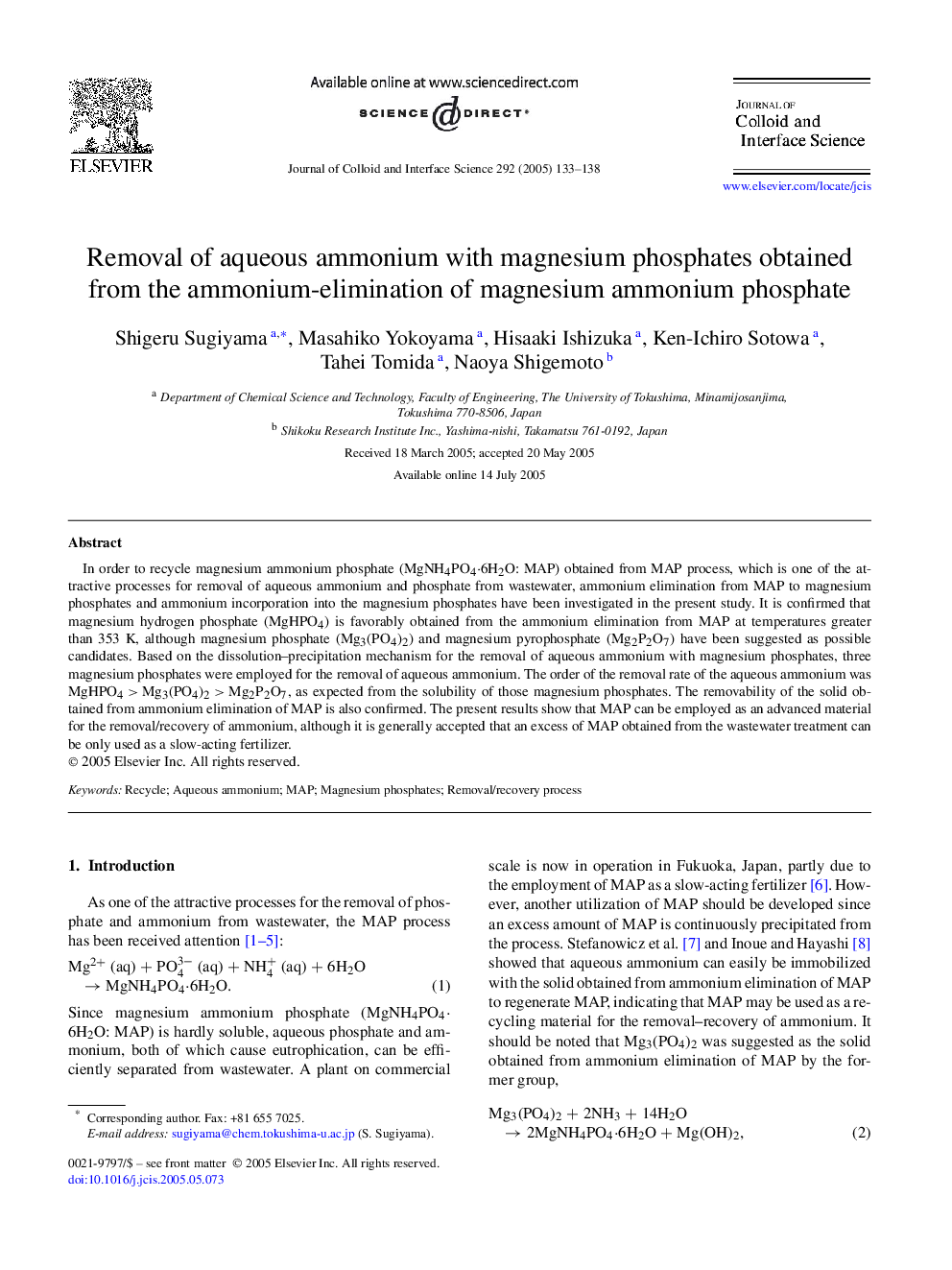| Article ID | Journal | Published Year | Pages | File Type |
|---|---|---|---|---|
| 10377472 | Journal of Colloid and Interface Science | 2005 | 6 Pages |
Abstract
In order to recycle magnesium ammonium phosphate (MgNH4PO4â
6H2O: MAP) obtained from MAP process, which is one of the attractive processes for removal of aqueous ammonium and phosphate from wastewater, ammonium elimination from MAP to magnesium phosphates and ammonium incorporation into the magnesium phosphates have been investigated in the present study. It is confirmed that magnesium hydrogen phosphate (MgHPO4) is favorably obtained from the ammonium elimination from MAP at temperatures greater than 353 K, although magnesium phosphate (Mg3(PO4)2) and magnesium pyrophosphate (Mg2P2O7) have been suggested as possible candidates. Based on the dissolution-precipitation mechanism for the removal of aqueous ammonium with magnesium phosphates, three magnesium phosphates were employed for the removal of aqueous ammonium. The order of the removal rate of the aqueous ammonium was MgHPO4Â >Â Mg3(PO4)2Â >Â Mg2P2O7, as expected from the solubility of those magnesium phosphates. The removability of the solid obtained from ammonium elimination of MAP is also confirmed. The present results show that MAP can be employed as an advanced material for the removal/recovery of ammonium, although it is generally accepted that an excess of MAP obtained from the wastewater treatment can be only used as a slow-acting fertilizer.
Keywords
Related Topics
Physical Sciences and Engineering
Chemical Engineering
Colloid and Surface Chemistry
Authors
Shigeru Sugiyama, Masahiko Yokoyama, Hisaaki Ishizuka, Ken-Ichiro Sotowa, Tahei Tomida, Naoya Shigemoto,
